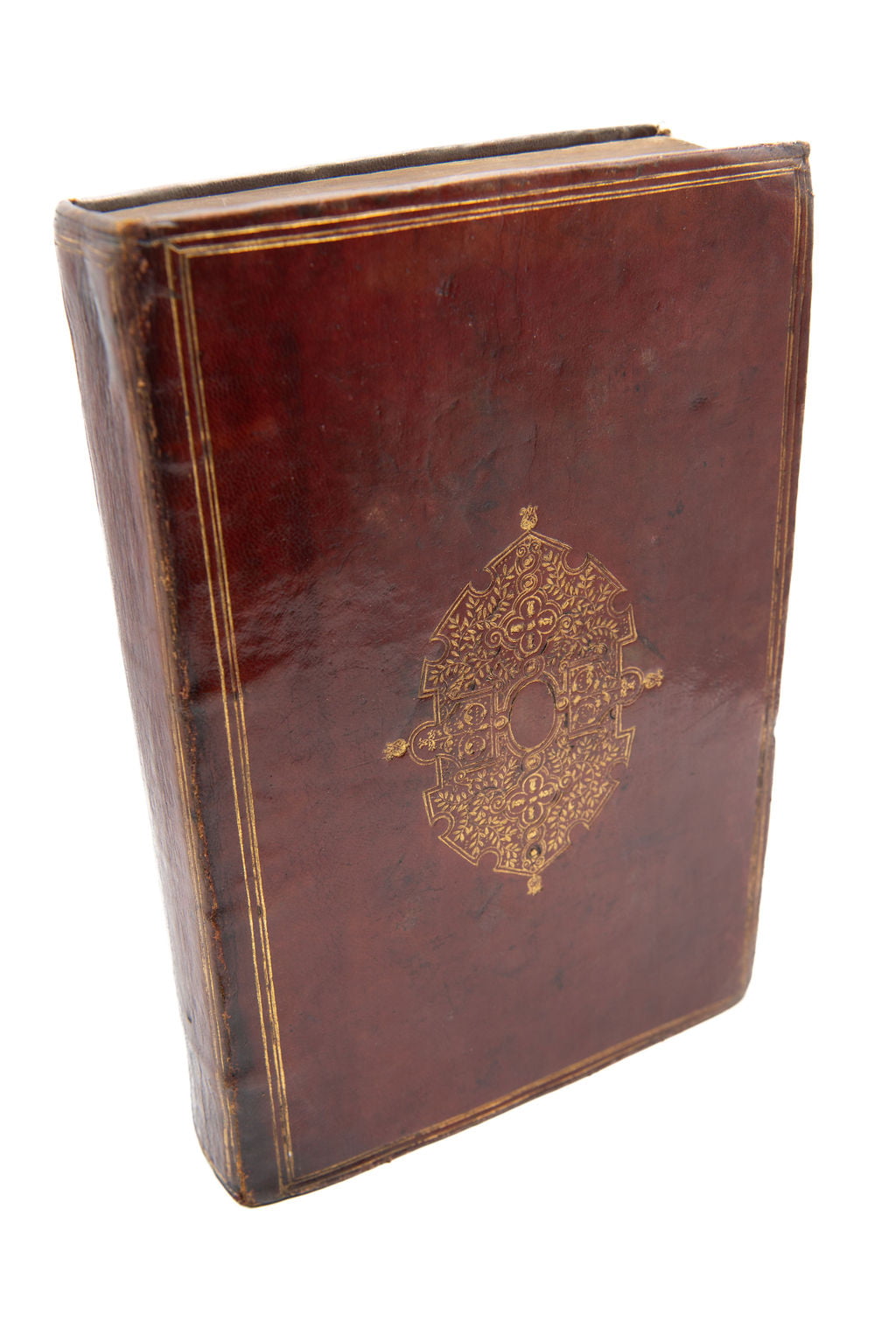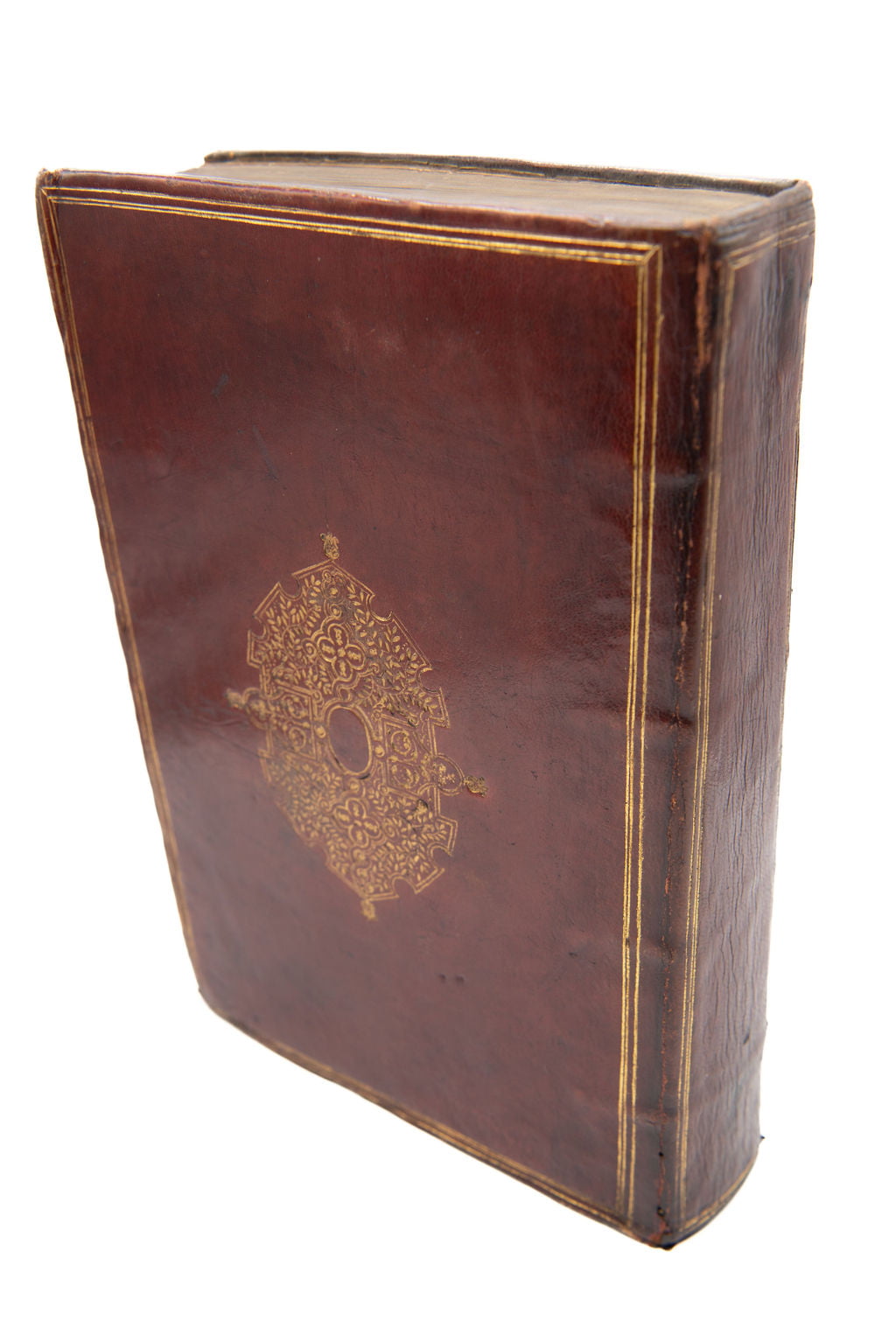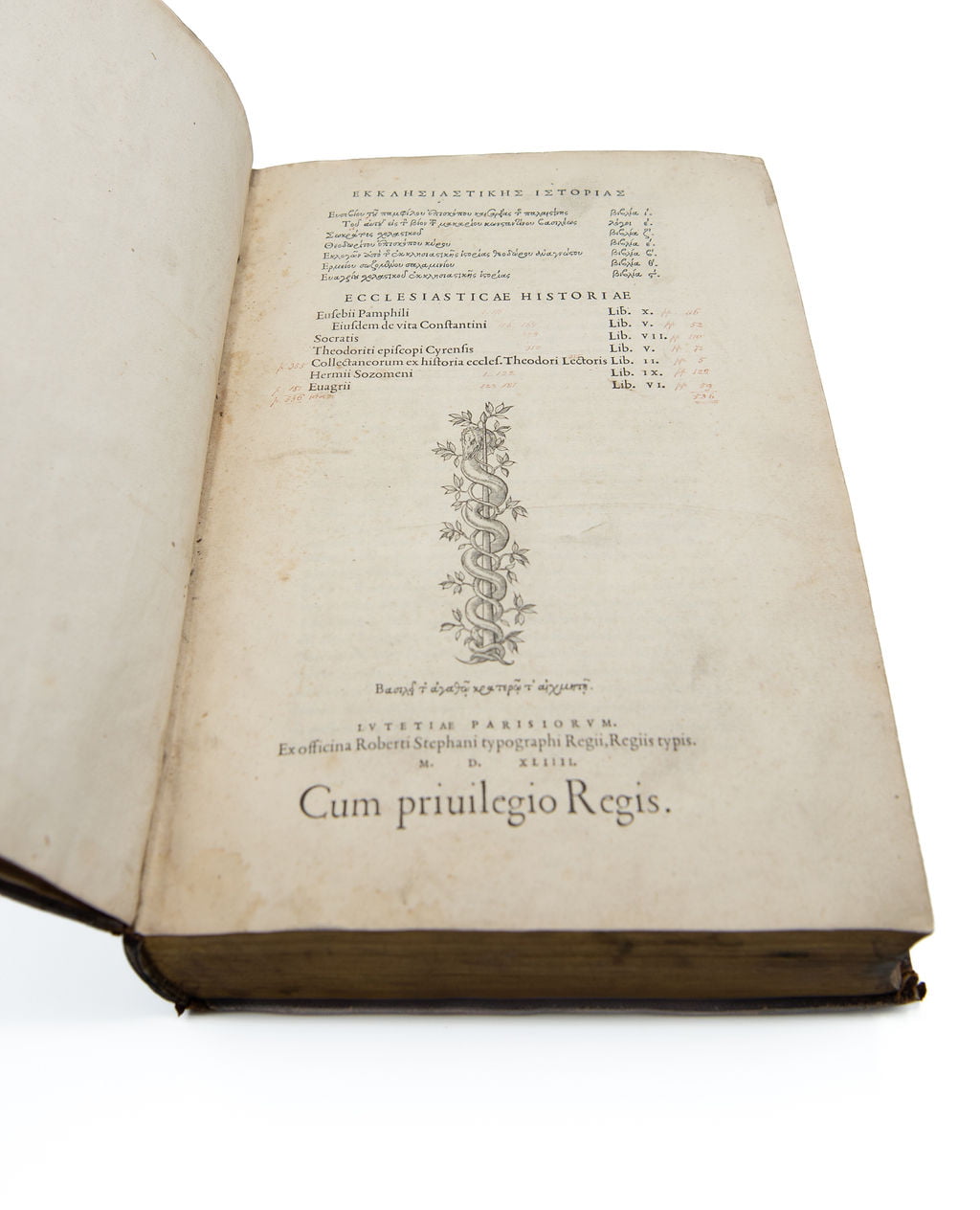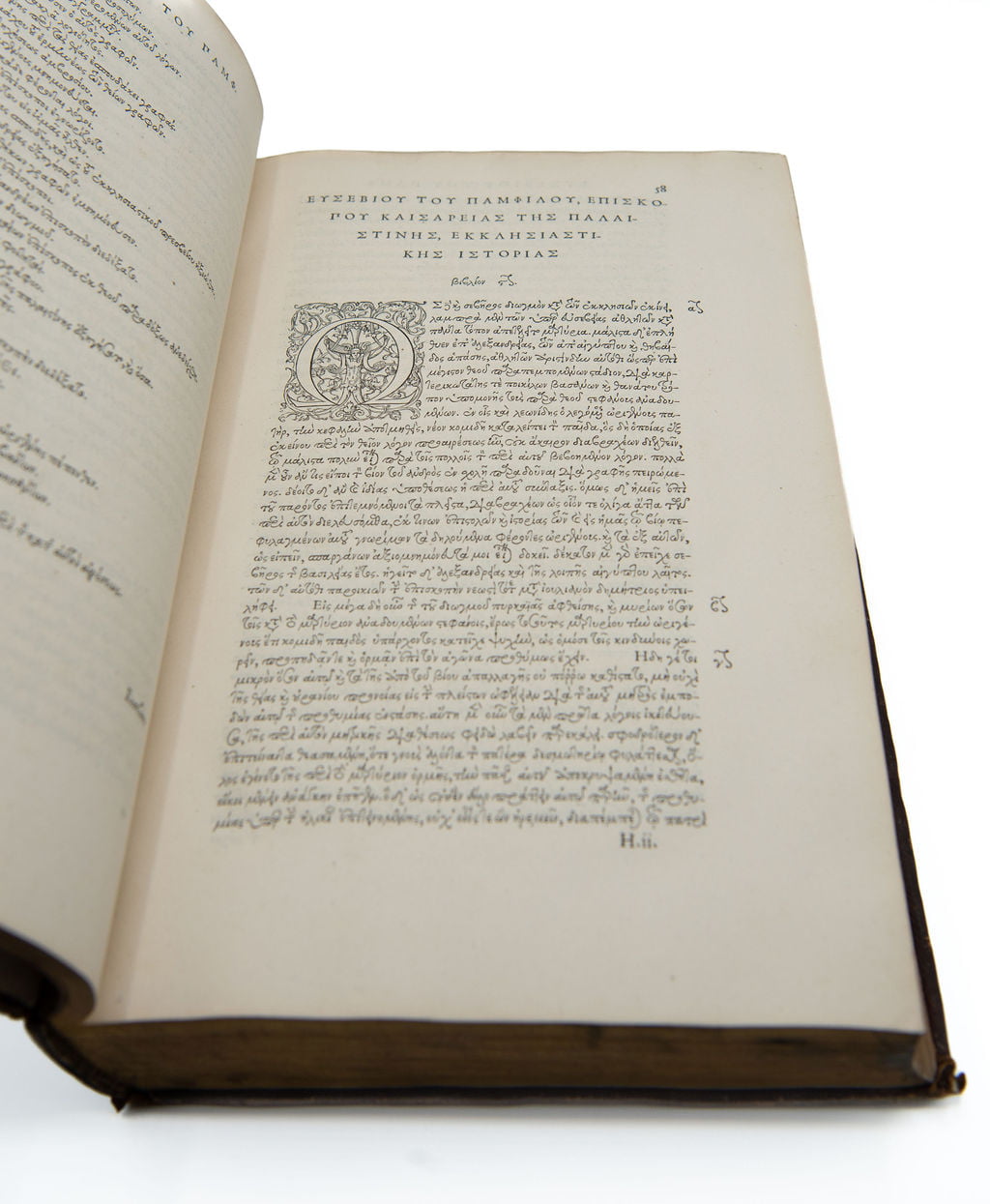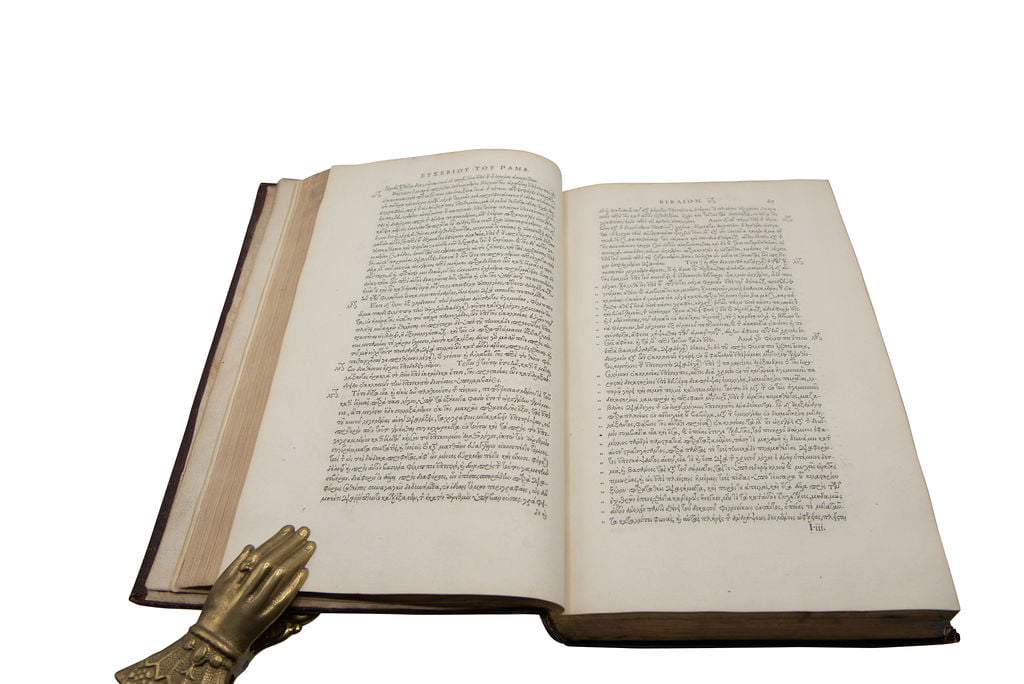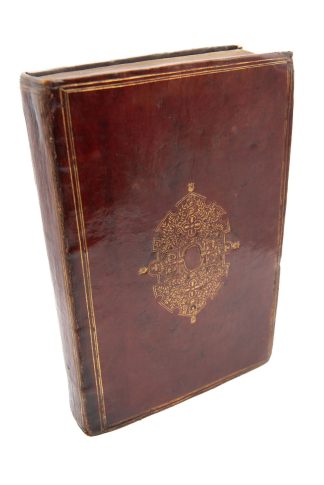EUSEBIUS OF CAESAREA.
FINE FRENCH BINDING
[Ekklesiastikes istorias.] Ecclesiasticae historiae.
Paris, Robert Estienne, 1544.£7,500.00
EDITIO PRINCEPS. Folio in 6s. ff. [4], 353 [i.e., 362]; 181, [5]. Greek letter. Decorated initials and ornaments. Title and last verso a bit dusty, small light water stain at blank foot of first 4 ll., slight, mainly marginal foxing to a dozen ll., minor ink splash to fore-edge of penultimate gathering. An excellent, clean, wide-margined copy in near contemporary French morocco, triple gilt ruled, large gilt centrepiece with tendrils, fleurons and interlacing ribbons, flat spine, triple gilt ruled, a.e.g., tailband expertly restored, corners a bit worn, Ms ownership note ‘Sum Henrici Combs E Coll. de Joh. Baptist. Au. Oxon. Febr 1839’, early ms page numbers in red ink to title, early ms Greek quotation from the work in red ink to last verso.
The very handsome French binding is decorated with an early fanfare pattern of interlacing ribbons, infrequently found in centrepiece decoration. Close models are the fanfare patterns of Parisian bindings c.1570s-80s, e.g., BL Davis445, some produced for the great C16 bibliophiles J.-A. de Thou, e.g., BL C19b11, BL c19f23, and Thomas Grenville, e.g., BL G11322. The expert, fine tooling is reminiscent of the style of the royal binder Clovis Eve (e.g., Belin n.229), active in Paris in the same years.
A very good, clean, wide-margined copy of this sumptuous Greek editio princeps—the second work printed in Garamond’s Grec du roi, decorated with woodcut initials and ornaments by Geoffrey Tory. Robert Estienne (1503-59) was son and heir to Henri and a talented classicist. In 1543, Francis I made him Royal Printer for the Greek. The post came with the privilege of using the new Greek type commissioned in 1540 by the King from Claude Garamond, a pupil of Tory. Grec du roi ‘paralleled, even surpassed, the earlier success of the Aldine founts in setting a European pattern’ (Ingram, p.377); ‘it was, and is, by far, the best type of its kind that has ever been cut […], I believe’ (Proctor). The Royal Printer was responsible for choosing suitable mss from the Royal Library as sources for new editions of classical and Patristic works. ‘Among the most important unpublished Greek texts […] were those of Eusebius of Caesarea, the first great historian of Christianity. This was decided upon by Estienne, or by Estienne and [the Royal Librarian] Du Chastel in consultation […]. Estienne’s edition remained the standard one for about a century’ (Armstrong, p.131).
Eusebius’s (260/65-339/40) ‘Ecclesiastica Historia’ is the first work on the history of apostolic Christianity. It spans the first to fourth centuries, and is based on lost documents (often cited) preserved in the library of Caesarea, of which he was bishop, as well as on historians like Tertullian, Josephus, Clement and Philo. The text is prefaced by Estienne’s Greek letter to the reader and a very short life of Eusebius. This is followed by a theological examination of the figure of Christ, in relation to the Trinity, and nine more books tracing church history from the Siege of Jerusalem under Titus to the years just after the victory of Constantine (to whom a biographical section is dedicated) over Maxentius and Maximinus. The subchapters focus on specific events (e.g., Diocletian’s persecution of the Christians, the Jews’ murder of Christ and their relationship with Rome), written works (e.g., Justin Martyr’s Apology for Christianity to Emperor Antoninus), theological questions (e.g., the condemnation of heretics), and ecclesiastical personalities and martyrs (e.g., Theophilus of Alexandria). Eusebius catalogues the ancient bishops, with particular attention to the lives of saints such as St Dionysius. This edition also includes the 5th-century continuations by the Byzantine Socrates Scholasticus, Theodoritus Bishop of Cyrene, Theodorus, Sozomen and Evagrius. A masterpiece of early Greek printing.
Brunet II, 1109; Renouard I, 60; Schreiber 77; Pettigree & Walsby, 70069. E. Armstrong, Robert Estienne, Royal Printer (1954); W. Ingram, ‘The Ligatures of Early Printed Greek’, Greek Roman and Byzantine Studies 7 (1966), 371-96; Vervliet, Palaeotypography, n.2; Libraire T. Belin, Livres des XVe et XVIe siècles dans leurs reliures originales (1914).In stock


